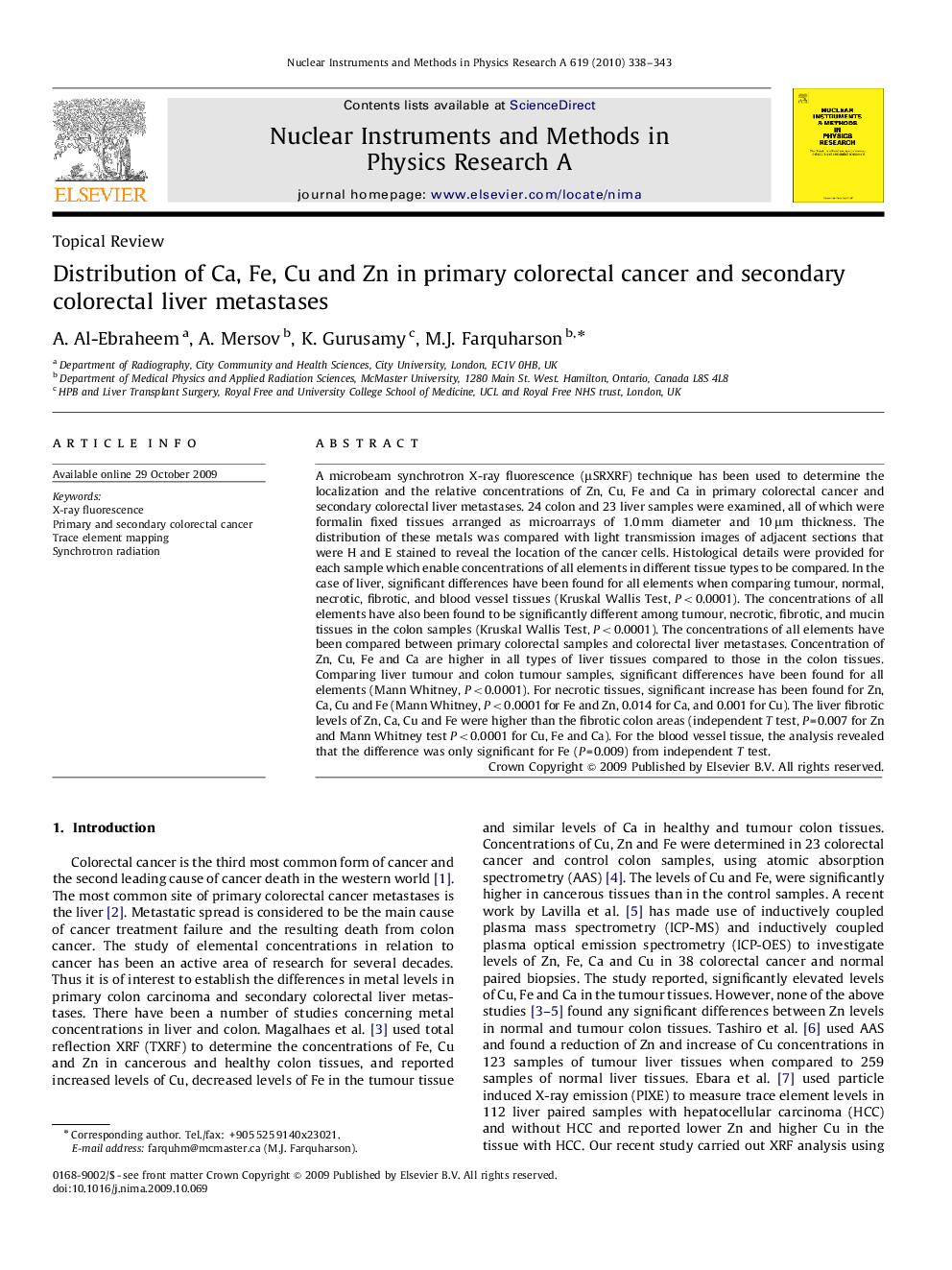| Article ID | Journal | Published Year | Pages | File Type |
|---|---|---|---|---|
| 1827216 | Nuclear Instruments and Methods in Physics Research Section A: Accelerators, Spectrometers, Detectors and Associated Equipment | 2010 | 6 Pages |
Abstract
A microbeam synchrotron X-ray fluorescence (μSRXRF) technique has been used to determine the localization and the relative concentrations of Zn, Cu, Fe and Ca in primary colorectal cancer and secondary colorectal liver metastases. 24 colon and 23 liver samples were examined, all of which were formalin fixed tissues arranged as microarrays of 1.0 mm diameter and 10 μm thickness. The distribution of these metals was compared with light transmission images of adjacent sections that were H and E stained to reveal the location of the cancer cells. Histological details were provided for each sample which enable concentrations of all elements in different tissue types to be compared. In the case of liver, significant differences have been found for all elements when comparing tumour, normal, necrotic, fibrotic, and blood vessel tissues (Kruskal Wallis Test, P<0.0001). The concentrations of all elements have also been found to be significantly different among tumour, necrotic, fibrotic, and mucin tissues in the colon samples (Kruskal Wallis Test, P<0.0001). The concentrations of all elements have been compared between primary colorectal samples and colorectal liver metastases. Concentration of Zn, Cu, Fe and Ca are higher in all types of liver tissues compared to those in the colon tissues. Comparing liver tumour and colon tumour samples, significant differences have been found for all elements (Mann Whitney, P<0.0001). For necrotic tissues, significant increase has been found for Zn, Ca, Cu and Fe (Mann Whitney, P<0.0001 for Fe and Zn, 0.014 for Ca, and 0.001 for Cu). The liver fibrotic levels of Zn, Ca, Cu and Fe were higher than the fibrotic colon areas (independent T test, P=0.007 for Zn and Mann Whitney test P<0.0001 for Cu, Fe and Ca). For the blood vessel tissue, the analysis revealed that the difference was only significant for Fe (P=0.009) from independent T test.
Related Topics
Physical Sciences and Engineering
Physics and Astronomy
Instrumentation
Authors
A. Al-Ebraheem, A. Mersov, K. Gurusamy, M.J. Farquharson,
